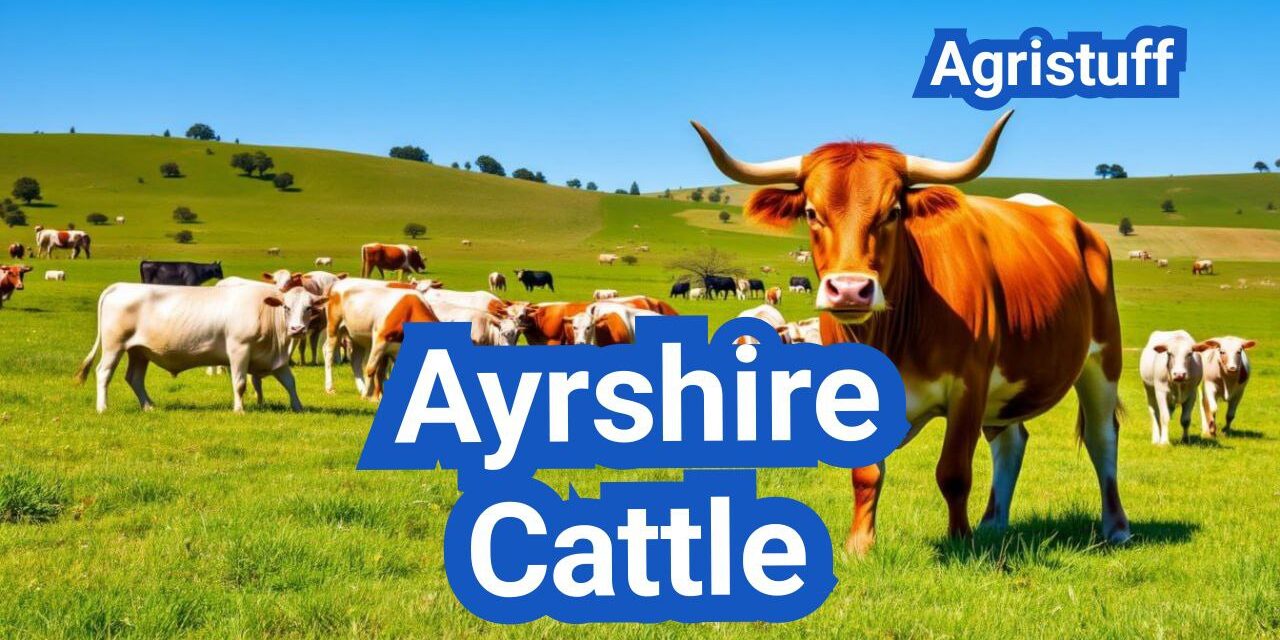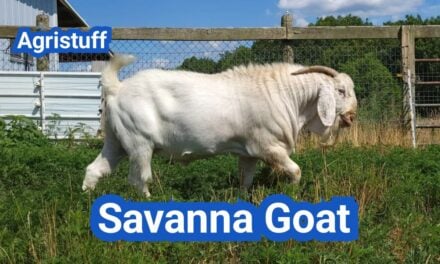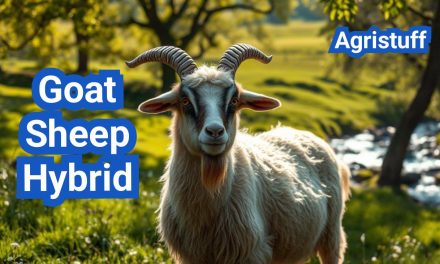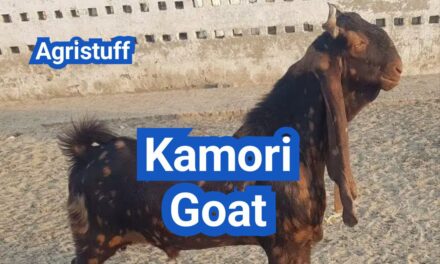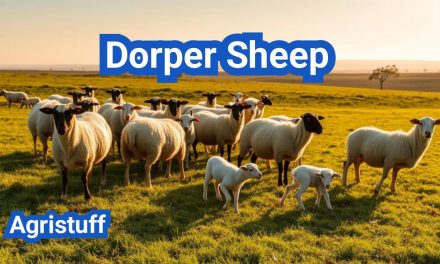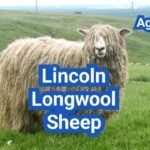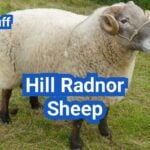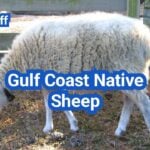The Ayrshire breed has a rich history, originating in the County of Ayr, Scotland, before 1800. By 1814, it was recognized as a distinct breed due to its unique characteristics and hardiness.
This dairy cattle breed is renowned for its red and white color and exceptional milk production capabilities. As a significant breed in dairy farming, Ayrshire cattle have been widely appreciated for their ability to produce high-quality milk.
The breed’s hardiness and adaptability make it a popular choice among dairy farmers. Understanding the history, characteristics, and uses of Ayrshire cattle is essential for those involved in the dairy industry.
Key Takeaways
- Ayrshire cattle originated in Scotland before 1800.
- The breed is known for its red and white color and high milk production.
- Ayrshire cattle are valued for their hardiness and adaptability.
- The breed is significant in dairy farming due to its milk production capabilities.
- Ayrshire cattle have been recognized as a distinct breed since 1814.
The Origins and History of Ayrshire Cattle
The history of Ayrshire cattle is deeply intertwined with the dairy farming heritage of Scotland, particularly in the County of Ayrshire. This breed has a rich history that spans centuries, with its development influenced by various factors and breeds.
Early Development in County of Ayrshire, Scotland
The Ayrshire breed originated in the County of Ayrshire, Scotland, where it was developed to thrive in the local climate and farming conditions. The breed’s early development involved crossbreeding with other local and introduced breeds, such as the Teeswater and Channel Islands cattle, to enhance its dairy qualities.
By the 18th century, Ayrshire cattle were recognized for their hardiness and milk production capabilities, making them a valuable asset to local dairy farmers.
Evolution of the Breed Through Different Strains
Over time, the Ayrshire breed evolved through selective breeding and the introduction of different strains. This evolution was aimed at improving the breed’s dairy production and adapting it to various farming systems.
The breed was officially recognized as a distinct breed by 1814, marking a significant milestone in its development.
Historical Significance in Global Dairy Farming
Ayrshire cattle have played a significant role in global dairy farming due to their robust nature and high milk production. They were introduced to various countries, including the United States, where they contributed to the development of local dairy industries.
Their adaptability and dairy production capabilities have made Ayrshire cattle a valuable breed in many dairy farming systems around the world.
As dairy farming continues to evolve, the Ayrshire breed remains an important part of dairy heritage and a viable option for farmers looking for a hardy and productive dairy breed.
Ayrshire Cattle: Breed Overview and Classification

The global distribution of Ayrshire cattle is a testament to their adaptability and dairy prowess. This breed has become a significant component of dairy farming in many countries.
Global Population and Distribution
Ayrshire cattle are found in many countries, including the United States, Canada, and various parts of Europe. Their ability to adapt to different environments has contributed to their widespread distribution.
- Significant populations in the U.S. and Canada
- Presence in European dairy farming
- Adaptability to various farming conditions
Conservation Status and Breed Preservation
While Ayrshire cattle are not considered a rare breed, efforts are made to preserve their genetic integrity and promote their use in dairy farming. Breed societies and associations play a crucial role in conservation efforts.
Key conservation strategies include:
- Genetic diversity monitoring
- Breed promotion and education
- Registration and classification systems
Breed Standards and Recognition
Ayrshire cattle are recognized by breed societies worldwide, with specific breed standards in place to maintain the breed’s characteristics. These standards cover aspects such as physical characteristics, milk production, and overall health.
The breed standards for Ayrshire cattle emphasize their distinctive red and white coloration and their ability to produce high-quality milk.
Physical Characteristics of Ayrshire Cattle
Ayrshire cattle are known for their distinctive physical characteristics, which play a crucial role in their dairy farming success. These characteristics have been developed over generations to make them efficient dairy producers.
Size, Weight, and Body Structure
Ayrshire cattle are classified as a medium-sized breed. On average, cows weigh around 1200 pounds, while bulls can weigh significantly more. Their body structure is sturdy and well-proportioned, with a strong backbone and well-sprung ribs, contributing to their overall health and milk production capabilities.
Color Patterns and Distinctive Markings
One of the most recognizable features of Ayrshire cattle is their red and white color pattern. The red can range from a deep, rich shade to a more orange tone, and the white can be pure or slightly cream-colored. The distribution of these colors can vary, but they typically have a balanced and symmetrical pattern.
“The color pattern of Ayrshire cattle is not just aesthetically pleasing; it is also a result of careful breeding to achieve the desired traits.” The distinctive markings are one of the breed’s hallmarks and are often considered when selecting breeding stock.
Horns and Other Physical Features
Historically, Ayrshire cattle were known to have horns, but many modern Ayrshire cattle are dehorned. The decision to dehorn is typically made for safety reasons, both for the animals and the farmers. Other physical features include their ears, which are of medium size and alert, and their eyes, which are bright and expressive.
Differences Between Bulls and Cows
There are several physical differences between Ayrshire bulls and cows. Bulls are generally larger and more muscular than cows, with a more pronounced muscular development around the neck and shoulders. Cows, on the other hand, have a more refined head and a larger, more developed udder, which is essential for their milk production.
In conclusion, the physical characteristics of Ayrshire cattle, including their size, color patterns, and body structure, are key factors in their suitability for dairy farming. Understanding these traits is essential for breeders and farmers looking to optimize their dairy operations.
Temperament and Behavioral Traits

Ayrshire cattle are renowned for their robust temperament and diverse behavioral traits, making them a popular choice among dairy farmers. Their hardiness and adaptability contribute significantly to their success in various dairy farming systems.
Personality and Handling Considerations
Ayrshire cattle are known for their strong personality. They are generally docile but can be feisty at times, requiring careful handling. Farmers appreciate their alertness and responsiveness, which makes them relatively easy to manage.
Adaptability to Different Environments
One of the key advantages of Ayrshire cattle is their adaptability to different environments. They thrive in various climates and farming conditions, from intensive dairy systems to more extensive grazing operations. This adaptability makes them a versatile choice for dairy farmers worldwide.
Grazing Behavior and Efficiency
Ayrshire cattle are efficient grazers, capable of converting grass into high-quality milk. Their grazing behavior is characterized by a strong instinct to roam and forage, which helps in maintaining their health and productivity. This efficiency in grazing is a significant factor in their popularity among dairy farmers.
Breeding and Genetics of Ayrshire Cattle
The breeding and genetics of Ayrshire cattle play a crucial role in the breed’s continued success in dairy farming. By focusing on genetic improvement and reproductive efficiency, breeders can enhance the overall quality and productivity of their herds.
Breeding Programs and Selection Criteria
Ayrshire cattle breeding programs are designed to improve the breed’s genetic potential for milk production and reproductive efficiency. Breeders use selection criteria such as milk yield, fertility, and longevity to identify superior genetics. These programs are crucial for the long-term viability of the breed.
The selection process involves evaluating the genetic merit of individual animals based on their performance records and pedigree information. This data-driven approach enables breeders to make informed decisions about which animals to breed, and which to cull.
Reproductive Efficiency and Calving Ease
Reproductive efficiency is a critical component of Ayrshire cattle breeding. Breeders focus on selecting animals with high fertility rates and ease of calving to reduce the risk of reproductive issues. This not only improves the overall health of the herd but also enhances productivity.
Calving ease is another important consideration, as it directly impacts the health and well-being of both the cow and the calf. By selecting for easier calving, breeders can reduce the incidence of calving difficulties and associated health issues.
Genetic Improvement Strategies
Genetic improvement strategies for Ayrshire cattle involve the use of advanced breeding technologies, such as genomic selection. This approach enables breeders to identify genetic markers associated with desirable traits, such as high milk production and improved fertility.
By leveraging these technologies, breeders can accelerate the rate of genetic progress in their herds, leading to improved productivity and profitability.
| Breeding Program Component | Description | Benefit |
|---|---|---|
| Genomic Selection | Uses genetic markers to identify desirable traits | Accelerates genetic progress |
| Selection Criteria | Evaluates genetic merit based on performance and pedigree | Improves overall herd quality |
| Reproductive Efficiency | Focuses on fertility and calving ease | Enhances productivity and reduces health issues |
Milk Production and Quality
Ayrshire cattle have been a cornerstone in dairy farming, known for their significant milk production and superior milk quality. Their ability to produce high volumes of milk with excellent composition makes them a valuable asset to dairy farmers.
Average Milk Yield and Production Records
Ayrshire cattle are known for their high milk production, with an average yield of over 12,000 pounds per year. This level of production is a result of careful breeding programs and selective genetics. According to the Dairy Herd Improvement Association (DHIA) records, Ayrshire cattle consistently rank high in milk production among dairy breeds.
The average milk yield is a critical factor in the economic viability of dairy farming operations. Ayrshire cattle’s ability to produce a substantial amount of milk annually makes them an attractive choice for dairy farmers looking to maximize their production.
Milk Fat and Protein Content
The milk produced by Ayrshire cattle is not only high in quantity but also superior in quality. It contains optimal levels of milk fat and protein content, making it ideal for various dairy products, including cheese, butter, and other specialty dairy products.
- Typically, Ayrshire milk contains:
- around 4% milk fat, which is optimal for cheese production
- 3.5% protein content, contributing to its high quality
The balance of these components is crucial for the production of high-quality dairy products. The milk’s composition makes Ayrshire cattle a preferred choice among dairy farmers who focus on producing a range of dairy products.
DHIA Records and Performance Tracking
The DHIA records play a vital role in tracking the performance of Ayrshire cattle. These records help dairy farmers monitor milk production, fat and protein content, and other critical parameters. By analyzing these records, farmers can make informed decisions about breeding, feeding, and overall herd management.
Suitability for Cheese and Specialty Products
Ayrshire milk is particularly suited for cheese and specialty dairy products due to its optimal fat and protein content. The milk’s composition contributes to the production of high-quality cheese with desirable characteristics such as flavor, texture, and appearance.
Many dairy farmers who raise Ayrshire cattle find that their milk is in high demand for artisanal cheese production. The breed’s milk is also used in the production of other specialty dairy products, enhancing its value in the dairy market.
In conclusion, Ayrshire cattle are an excellent choice for dairy farmers due to their high milk production and superior milk quality. Their milk is well-suited for a variety of dairy products, making them a valuable asset in the dairy industry.
How to Raise Ayrshire Cattle Successfully
Raising Ayrshire cattle requires a comprehensive approach that includes proper housing, nutrition, and health care. Successful management of Ayrshire cattle involves understanding their specific needs and implementing strategies to meet those needs.
Housing Requirements and Facility Design
Ayrshire cattle need well-designed housing that provides comfort and protection from the elements. The housing should be well-ventilated to prevent the buildup of moisture and reduce the risk of respiratory diseases. “A well-designed barn is crucial for the health and productivity of Ayrshire cattle,” as noted by dairy farming experts.
The facility design should also consider the space requirements for the cattle, ensuring that each animal has enough room to stand, lie down, and move comfortably. Adequate space helps in reducing stress and promoting overall well-being.
Feeding and Nutrition Management
Ayrshire cattle are known for their high milk production, and their diet plays a crucial role in maintaining this productivity. The feeding strategy should include a balanced mix of forage, concentrates, and minerals to meet their nutritional needs.
Nutrition management involves not just the quality of feed but also the feeding practices. Ensuring that the cattle have access to fresh, clean water at all times is essential. Regular monitoring of the cattle’s body condition score can help in adjusting the feeding strategy as needed.
Heifer Growth Targets and Development
Raising heifers to meet specific growth targets is critical for their future productivity. Heifers should be grown at a rate that allows them to reach breeding age and weight appropriately. This involves careful planning and monitoring of their growth.
Health Management Protocols
Effective health management is crucial for the overall success of raising Ayrshire cattle. This includes implementing vaccination programs, parasite control measures, and regular health checks. Maintaining a clean and hygienic environment is also vital in preventing diseases.
Regular monitoring and recording of the cattle’s health can help in early detection and treatment of any health issues. “Proactive health management is key to maintaining a healthy and productive Ayrshire herd,” according to veterinary experts.
By focusing on these key areas, farmers can successfully raise Ayrshire cattle that are healthy, productive, and profitable.
Ayrshire Cattle in the United States

Ayrshire cattle have been a part of the U.S. dairy farming landscape since their introduction in the early 19th century. Their arrival marked the beginning of a new era in dairy farming, bringing with them the breed’s renowned characteristics and dairy production capabilities.
Introduction and Historical Development
The introduction of Ayrshire cattle to the United States was a significant event in the history of American dairy farming. The breed was first imported in the early 1800s, and over time, it gained popularity due to its hardiness, fertility, and milk production qualities. Ayrshire cattle were particularly valued for their ability to thrive in a variety of conditions, making them an attractive choice for many dairy farmers.
Current Population and Regional Distribution
Today, Ayrshire cattle can be found in various regions across the United States. While they may not be as numerous as some other dairy breeds, they have a dedicated following and are valued for their contributions to dairy farming. The regional distribution of Ayrshire cattle is influenced by factors such as climate, feed availability, and market demand for dairy products.
Notable Ayrshire Farms and Breeding Programs
Several notable farms and breeding programs in the United States have made significant contributions to the development and promotion of Ayrshire cattle. These programs focus on improving the breed’s genetic potential, milk production, and overall health. Some of the most renowned Ayrshire breeders are recognized for their expertise and innovative approaches to dairy farming.
Market for Ayrshire Cattle in America
The market for Ayrshire cattle in America is influenced by various factors, including the demand for high-quality dairy products, the economic viability of dairy farming, and the availability of breeding stock. The breed’s strong reputation and the quality of its milk make it a sought-after choice for many dairy producers.
West Coast
| Region | Ayrshire Population | Notable Farms |
|---|---|---|
| Northeast | 10,000 | Green Valley Farm |
| Midwest | 8,000 | Sunny Meadows Dairy |
| 5,000 | Pacific Dairy Farm |
Commercial Uses and Economic Value

The economic value of Ayrshire cattle cannot be overstated, particularly in their primary role in dairy production. Ayrshire cattle are highly regarded for their ability to produce high-quality milk, which is rich in fat and protein, making it ideal for various dairy products.
Primary Role in Dairy Production
Ayrshire cattle are primarily used for dairy production, with their milk being optimized for cheese and other dairy products. The breed’s milk is known for its excellent quality, with a high percentage of fat and protein, which is crucial for producing premium dairy products. According to dairy industry experts, “Ayrshire milk is highly prized for its cheesemaking qualities, due to its optimal fat and protein content.”
“Ayrshire milk is highly prized for its cheesemaking qualities, due to its optimal fat and protein content.”
Dairy Industry Expert
Components Optimization for Dairy Products
The milk from Ayrshire cattle is optimized for various dairy products, including cheese, butter, and ice cream. The high fat and protein content in their milk makes it particularly suitable for cheese production, where it is valued for its ability to enhance flavor and texture.
Secondary Uses and Versatility
Beyond dairy production, Ayrshire cattle have secondary uses that contribute to their economic value. They are known for their hardiness and longevity, making them a valuable asset on farms where they are used for crossbreeding programs to improve herd quality.
Economic Considerations for Farmers
For dairy farmers, the economic considerations of raising Ayrshire cattle include the cost of feed, healthcare, and breeding programs. However, the breed’s high milk production and the premium price it commands in the market make it a profitable venture. Farmers who raise Ayrshire cattle can benefit from their efficient milk production and the breed’s overall hardiness, which reduces veterinary costs.
Economic benefits of raising Ayrshire cattle include reduced costs associated with veterinary care due to their hardiness and the premium prices their milk commands. This makes the breed an attractive option for dairy farmers looking to maximize their returns.
Ayrshire vs. Other Dairy Breeds: Comparative Analysis

The dairy industry is dominated by several key breeds, with Ayrshire and Holstein being among the most significant, each with its own strengths and weaknesses. Understanding the differences between these breeds is crucial for dairy farmers to make informed decisions about their operations.
Ayrshire vs. Holstein: Production and Efficiency
Ayrshire and Holstein breeds are often compared in terms of milk production and efficiency. While Holsteins are known for their high milk yield, Ayrshires are recognized for their hardiness and efficiency in converting feed into milk. A comparison of the two breeds reveals that Ayrshires have a more robust constitution, which can lead to lower veterinary costs and a longer productive life.
Advantages in Different Farming Systems
Ayrshire cattle are particularly advantageous in grazing-based farming systems due to their grazing efficiency and ability to thrive on a variety of feed sources. In contrast, Holsteins are often used in more intensive dairy systems where their high milk production potential can be maximized.
Choosing the Right Breed for Your Operation
When deciding between Ayrshire and other dairy breeds, farmers should consider their specific needs and farming conditions. Factors such as land type, climate, and market demands play a significant role in this decision. For operations focusing on sustainability and efficiency, Ayrshires may offer a compelling option.
Crossbreeding Opportunities and Benefits
Crossbreeding Ayrshires with other dairy breeds, such as Holsteins, can offer several benefits, including hybrid vigor and a more balanced production profile. This approach can help farmers leverage the strengths of different breeds to improve overall herd performance and resilience.
Herd Management Techniques for Ayrshire Cattle

Ayrshire cattle farmers must employ robust herd management techniques to optimize production and longevity. Effective herd management is crucial for maintaining a healthy and productive herd.
Record Keeping and Performance Analysis
Accurate record keeping is essential for analyzing herd performance. This includes tracking milk production, reproductive cycles, and health issues. By maintaining detailed records, farmers can identify areas for improvement and make informed decisions.
Key records to keep include:
- Milk production data
- Breeding and calving records
- Health treatments and vaccinations
Reproduction Management
Reproduction management is critical for maintaining a productive herd. This involves monitoring reproductive cycles, managing breeding programs, and ensuring proper prenatal care.
Culling Decisions and Herd Improvement
Culling decisions are vital for improving herd quality. Farmers should cull cows that are not productive or have health issues. This process helps maintain a healthy and efficient herd.
Optimizing Longevity and Lifetime Production
Optimizing longevity involves managing factors that affect a cow’s lifespan and productivity. This includes providing proper nutrition, ensuring good health care, and maintaining comfortable living conditions.
| Factor | Impact on Longevity | Management Strategy |
|---|---|---|
| Nutrition | Directly affects health and productivity | Provide balanced diet, monitor nutritional needs |
| Health Care | Prevents disease, reduces mortality | Regular vaccinations, health checks |
| Living Conditions | Influences stress levels and comfort | Ensure comfortable housing, adequate space |
By implementing these herd management techniques, Ayrshire cattle farmers can improve the overall efficiency and productivity of their operations.
Breed Organizations and Resources

Ayrshire cattle breeders can rely on various organizations and resources to support their farming endeavors. These organizations play a crucial role in promoting the breed, providing educational materials, and facilitating the registration process.
Ayrshire Associations and Societies
Ayrshire associations and societies are established worldwide to support breeders. For instance, the Ayrshire Breeders’ Association provides a platform for breeders to network, access breed information, and participate in events. These associations often host conferences, workshops, and webinars to educate breeders on best practices in Ayrshire cattle breeding.
Registration and Classification Systems
Registration and classification systems are vital for maintaining the integrity of the Ayrshire breed. The Ayrshire breed registry is responsible for recording pedigree information, tracking breed characteristics, and ensuring compliance with breed standards. This process helps in preserving the genetic purity and quality of the breed.
Educational Resources and Support Networks
Breeders have access to a variety of educational resources, including breed manuals, online courses, and expert advice from experienced breeders. Support networks are also available, offering guidance on issues ranging from breeding strategies to farm management.
Shows and Exhibitions for Ayrshire Cattle
Ayrshire cattle shows and exhibitions provide breeders with opportunities to showcase their animals, compare breeding stock, and learn from industry experts. These events are crucial for promoting the breed and encouraging innovation in breeding practices. Participating in shows can also enhance a breeder’s reputation and open up new business opportunities.
The collective efforts of Ayrshire associations, registration bodies, and educational resources contribute significantly to the breed’s ongoing success and popularity among dairy farmers.
The Future of Ayrshire Cattle
Ayrshire cattle continue to be a vital component of dairy farming worldwide, thanks to their hardiness and impressive milk production capabilities. As the dairy industry evolves, the breed is well-positioned to adapt to changing demands and trends.
The future of Ayrshire cattle looks promising, with ongoing efforts in breed conservation and genetic improvement. Dairy farmers are increasingly recognizing the value of Ayrshire cattle in their operations, driven by the breed’s efficiency and productivity.
Industry trends indicate a growing focus on sustainability and animal welfare, areas where Ayrshire cattle excel due to their robust nature and grazing efficiency. As dairy farming continues to advance, the Ayrshire breed is poised to remain a significant player in the global dairy market.
With their rich history, adaptability, and productive capabilities, Ayrshire cattle are set to continue making a valuable contribution to dairy farming for years to come.
FAQ
What are the distinguishing characteristics of Ayrshire cattle?
Ayrshire cattle are known for their distinctive red and white color patterns, robust build, and high milk production. They are a hardy breed, adaptable to various environments, and are recognized for their efficient grazing behavior.
How does the milk production of an Ayrshire cow compare to that of other breeds?
Ayrshire cattle are renowned for their high-quality milk, with a rich content of fat and protein, making them suitable for dairy production. While they may not produce as much milk as some other breeds like Holsteins, their milk is of high quality and is often preferred for cheese and specialty dairy products.
In which parts of the world are Ayrshire cattle predominantly found?
Ayrshire cattle originated in Ayrshire, Scotland, and have since been introduced to many countries around the world, including the United States, Canada, and various European nations. They are valued for their hardiness and dairy production capabilities in diverse farming systems.
What is the average weight range for an adult Ayrshire cow?
The average weight for an adult Ayrshire cow typically ranges from 1,100 to 1,500 pounds, with bulls being larger. Their size and build contribute to their robust health and longevity.
For what purposes are Ayrshire cattle primarily raised?
Ayrshire cattle are primarily raised for dairy production. Their milk is used for a variety of dairy products, including cheese, butter, and milk. They are also valued for their meat, although their primary use is in dairy.
What are the common color patterns seen in Ayrshire cattle?
Ayrshire cattle are characterized by their red and white color patterns. The red can range from a deep, rich red to a more orange or tan color, and the white can vary in extent, often appearing in patches or as a white background with red markings.
What is special about Ayrshire milk?
Ayrshire milk is known for its high quality, with a good balance of fat and protein, making it particularly suitable for cheese production and other specialty dairy products. Its composition contributes to the rich flavor and texture of these products.
What are the disadvantages of Ayrshire cattle?
While Ayrshire cattle are valued for their dairy production and hardiness, they may not be as high in milk yield as some other breeds. They also require proper management to maintain their health and productivity, and their red and white coat can be more prone to certain skin conditions.
How do Ayrshire cattle compare to Holsteins in terms of production efficiency?
Ayrshire cattle are known for their efficient milk production and grazing ability, often being more efficient in pasture-based systems compared to Holsteins. While Holsteins may produce more milk, Ayrshires are valued for their milk quality and hardiness.
What are the key factors in managing an Ayrshire herd effectively?
Effective management of an Ayrshire herd involves proper nutrition, health management, reproduction strategies, and record keeping. Regular monitoring of milk production, health checks, and careful breeding decisions are crucial for optimizing the productivity and longevity of the herd.
Conclusion of: Ayrshire Cattle
Introduction: Why Ayrshire Cattle still matter
Ayrshire Cattle are a medium-framed, efficient red-and-white dairy breed prized for balanced milk components, pasture ability, and longevity—qualities that help U.S. producers optimize returns from forage and manage input costs without sacrificing quality. Oklahoma State University – Breeds of Livestock (Ayrshire)
History and origin of Ayrshire Cattle
Ayrshire Cattle originated in Scotland’s County of Ayr before 1800, evolving from local stock that were refined by selective crosses and formalized with early breed shows in the late 18th century—history that underpins today’s hardy, grazing-oriented cows. U.S. Ayrshire Breeders’ Association – The Ayrshire Cow
Arrival and growth of Ayrshire Cattle in the United States
Importations of Ayrshire Cattle to the United States began in the early 1820s, with the breed flourishing first in New England’s rugged dairying landscape before spreading nationwide as farmers valued their forage efficiency and udder quality. Oklahoma State University – Ayrshire history
Defining look and color of Ayrshire Cattle
Ayrshire Cattle are distinctly red and white—ranging from light mahogany to near-black red—with sharply edged markings; historically horned, they’re now commonly dehorned for practicality while retaining a classic dairy silhouette. Ayrshire Breeders’ Association – Breed characteristics
Size, structure, and strength in Ayrshire Cattle
As an efficient, medium-sized dairy breed, mature Ayrshire Cattle should exceed about 1,200 lb, with strong feet and legs and capacious, well-attached udders that support sustained, profitable production on diverse management systems. OSU – Functional type and size
Production snapshot: what Ayrshire Cattle typically deliver
Across U.S. herds on DHIA test, Ayrshire Cattle in recent national summaries average roughly 20,000 lb milk per lactation with ~3.97% fat and ~3.17% protein, offering component balance suited for both fluid milk and cheese markets. Council on Dairy Cattle Breeding (CDCB) – Ayrshire lactation averages
Milk components: why Ayrshire Cattle fit cheese and fluid markets
With “moderate butterfat” and “relatively high protein,” Ayrshire Cattle produce a milk profile that historically served Scottish butter and cheese makers and today aligns with U.S. processor demand for solids and yield. Ayrshire Breeders’ Association – Milk composition
Forage conversion and grazing aptitude in Ayrshire Cattle
Selected for a cool, rugged homeland, Ayrshire Cattle retain aggressive foraging behavior and adapt to low-input, pasture-forward dairying while maintaining body condition and component-rich milk on grass-based diets. Ayrshire Cattle Society (UK) – Grazing efficiency
Temperament and calf vigor with Ayrshire Cattle
Dairy families often note the sturdy vigor of Ayrshire Cattle calves and the breed’s manageable disposition, which together support low-stress rearing and efficient transition into the milking herd on commercial dairies. Ayrshire Breeders’ Association – Calf vigor
Udder quality and longevity in Ayrshire Cattle
From a conformation standpoint, Ayrshire Cattle tend to excel in udder structure, teat placement, and overall soundness—traits linked with longevity, lower culling risk, and consistent component yields over multiple lactations. OSU – Udder conformation and soundness
Nutrition and milk-component management for Ayrshire Cattle
Strong nutrition programs help Ayrshire Cattle express their genetic potential; targeting rumen health, fiber effectiveness, and energy balance supports normal fat and protein tests and minimizes inversions that erode milk value. New Mexico State University Extension – Managing Milk Composition
Growth and heifer development benchmarks for Ayrshire Cattle
Raising Ayrshire Cattle heifers to weight-for-age and height targets supports timely breeding and first-calf performance; breed-specific growth charts and monitoring keep development aligned with herd goals. Penn State Extension – Dairy Heifer Growth Charts
Genetics 101: selecting Ayrshire Cattle for profit
Modern selection tools let producers stack genetics in Ayrshire Cattle for health, fertility, and components; leveraging CDCB evaluations and economic indices (e.g., Net Merit $) aligns sire choices with long-term ROI. Council on Dairy Cattle Breeding – U.S. genetic evaluations
Keeping up with base changes and PTA interpretation in Ayrshire Cattle
Because genetic evaluations recalibrate periodically, understanding base changes and PTA shifts helps Ayrshire Cattle breeders maintain realistic benchmarks and consistent selection thresholds across proof runs. USCDCB – Genetic Base Change (explainer)
Crossbreeding considerations that involve Ayrshire Cattle
Crossbreeding with breeds like Holstein, Jersey, or Brown Swiss can leverage heterosis for fertility or health while preserving the component balance Ayrshire Cattle contribute—use structured programs and keep clear market goals. UW-Extension (archived handout) – Dairy Crossbreeding basics
Health traits and resilience in Ayrshire Cattle
Beyond conformation, Ayrshire Cattle benefit from U.S. health trait evaluations (e.g., mastitis resistance, metabolic disorders), letting herds select sires with favorable predicted transmitting abilities alongside production. USCDCB – Health evaluations overview
Housing and climate adaptability for Ayrshire Cattle
From freestall and parlor setups to rotational grazing, Ayrshire Cattle are widely adaptable; their selection history in tough climates helps them perform in diverse U.S. regions with thoughtful ventilation, footing, and cow flow. OSU – Adaptability across systems
Cheese yield and product pathways for Ayrshire Cattle milk
The balanced solids profile of Ayrshire Cattle milk can support strong cheese yields and quality, making the breed attractive to artisan processors and direct-market dairies looking to differentiate on taste and components. Ayrshire Cattle Society – Components & product suitability
Record keeping, DHIA testing, and benchmarking Ayrshire Cattle
Regular milk recording (DHIA) provides hard numbers on Ayrshire Cattle performance, enabling benchmarking against national averages for milk, fat, and protein while informing ration, reproduction, and culling decisions. CDCB/NDHIA – Ayrshire state & national averages
Breeder networks, semen, and starting with Ayrshire Cattle
For newcomers, breed associations and directories simplify sourcing semen and replacements; connecting with experienced breeders helps tailor Ayrshire Cattle genetics to your region, system, and market. Ayrshire Breeders’ Association – Programs & Breeders Directory
Quick comparison: how Ayrshire Cattle stack up
Compared with higher-volume Holsteins and richer-fat Jerseys, Ayrshire Cattle offer a strategically balanced middle ground—solid milk, strong components, and pasture aptitude that fits fluid and manufacturing markets. OSU – Dairy breed profiles
Practical management tips for Ayrshire Cattle herds
In practice: align calving seasons with forage, monitor fat:protein ratios for rumen health, and maintain body condition to keep Ayrshire Cattle producing efficiently through peak and late lactation. NMSU Extension – Managing Milk Composition (D-104)
Where Ayrshire Cattle fit in U.S. dairy economics today
For family and grazing-oriented dairies, Ayrshire Cattle can reduce feed costs per cwt and diversify product options thanks to solid components—especially attractive when premiums reward fat, protein, and quality. Ayrshire Breeders’ Association – Production & components
Final thought
Ayrshire Cattle combine heritage, hardiness, and highly marketable milk composition. If your goal is to turn grass into saleable solids with cows that last, Ayrshire Cattle deserve a serious look—especially when you pair good forage, smart genetics, and disciplined records.
Sources & References
- Oklahoma State University – Ayrshire Cattle
- U.S. Ayrshire Breeders’ Association – The Ayrshire Cow
- CDCB/NDHIA – Ayrshire Lactation Averages (U.S.)
- Ayrshire Cattle Society (UK) – The Breed
- New Mexico State University Extension – Managing Milk Composition (D-104)
- USCDCB – Genetic Base Change (overview)
- UW-Extension – Dairy Crossbreeding (reference)

